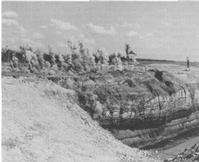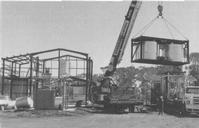


Chapter 9
I Introduction
II The Australian Chemical Industry
i Beginnings 1865-1919
ii Fertilisers
iii Raw materials from gasworks and coke ovens
iv The beginnings of industrial chemical research - in the sugar industry
v Explosives
III Pharmaceuticals
IV Chemists In Other Industries
V The Dawn Of Modern Chemical Industry - High Pressure Synthesis
VI The Growth Of Synthetic Chemicals - Concentration, Rationalisation And International Links
VII Australian Industrial Chemical Research Laboratories
VIII The Plastics Industry
IX The Paint Industry
X Acknowledgements
References
Index
Search
Help
Contact us

At another meeting in Duluth, in 1956, the recipe was publicly disclosed; if ever it had been patentable it was no longer. The folklore that various miners 'had long used the mixture' probably dates from that time; so does its acronym ANFO (ammonium nitrate fuel oil). Originally it was far from a commercial product, too weak, too sensitive to caking and moisture, too erratic in sensitivity. This latter characteristic it shared with early nitroglycerine -like it, could it be controlled by systematic investigation? Clearly, there was an opportunity for research, not as dramatic, but not altogether different from the opportunity Nobel had grasped. An academic, Dr. Melvin A. Cook, of the University of Utah was the first to see this. He conceived an entirely unconventional approach: if water was the cause of desensitisation, might an explosive not be resistant to further ingress of water if the explosive itself were water based? The key to this question was in sensitisers.
Cook used 65 per cent AN and aluminium flake in an aqueous slurry, the first AN slurry. Cook then went into industry and together with his co-worker H. E. Farnham patented some of these systems (1956/7) and licensed Canadian Industries Limited (CIL), an Associate of ICI UK and ICI Australia. CIL developed the slurries further with new sensitisers and crosslinking (thickening) agents which improved dependability and water resistance. Through CIL, ICI Australia and ICI U.K. (Nobel Group) became aware of this new alternative to nitroglycerine based explosives. Although these companies had a vested interest in the established explosives they recognised the opportunity for competitive advances.
In some ways one could have considered ANFO and AN slurries as a reversal of technology. Before Nobel, complex mixtures of black powder were used; a fundamental merit in nitroglycerine had been that it provided both fuel and oxygen in the one homogeneous substance. ANFO was a return to blends but had the immense advantage that the components could be transported separately and cheaply as ordinary chemicals, not as classified explosives, while their blasting power was comparable; large masses could be poured into big boreholes -even wet ones -and the system as a whole was cheaper. The vast distances of Australia and Canada made overland transport an important element. The phenomenal growth of surface mining of coal and iron ore favoured the system, and the system in turn was one of the prerequisites of its success. When experiments started in Australia in 1958, however, it was still a lengthy path from crude, erratic blends to a dependable industrial product. Indeed, some scientists saw the dependability of gelignite as an unmatchable target. Grained AN fertiliser grade had been made at Deer Park since 1940 and was tried in ANFO mixes in 1958 and 1960. It did not flow well enough for pneumatic conveying into boreholes, lacked resistance to moisture, absorptivity and product consistency in large scale production, a most difficult requirement for a product of this type. Step by step these targets were achieved in laboratory and plant trials. An important final step was the systemisation of bulk loading. At first special trucks with pneumatic or auger discharge were developed, then on-site-mixing plants. Progressively ICI Australia decentralised much of its AN explosives manufacture from the historic Deer Park site to a larger number of on-site bulk manufactures at the mining centres of Australia (Figs. 9 and 10). The decentralisation of explosives was an 'invention' of a kind; it needed, of course, understanding of the elements of AN chemistry, but it also needed the systems approach.


Organisations in Australian Science at Work - I.C.I. Australia Ltd; Mount Isa Mines (M.I.M.)
 |
Australian Academy of Technological Sciences and Engineering |  |
© 1988 Print Edition page 647, Online Edition 2000
Published by Australian Science and Technology Heritage Centre, using the Web Academic Resource Publisher
http://www.austehc.unimelb.edu.au/tia/613.html